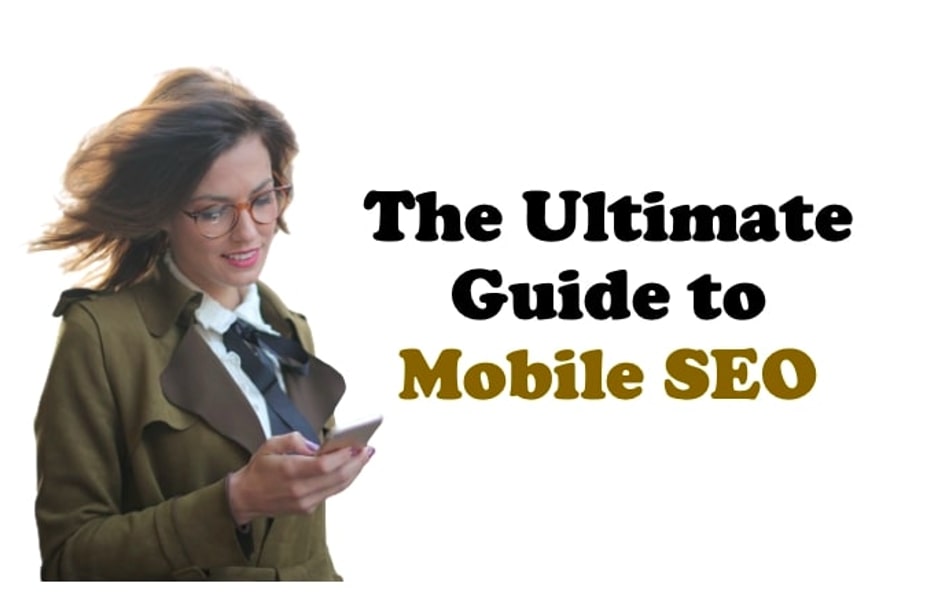In today’s fast-paced digital age, where consumers are constantly bombarded with ads, content marketing has emerged as a powerful tool for businesses to connect with their target audience. But content marketing is far from a new concept – in fact, its roots can be traced back to the early days of advertising.
Over time, the tactics and strategies used in content marketing have evolved and adapted to changes in technology and consumer behavior. In this article, we’ll take a deep dive into the evolution and history of content marketing, exploring its early beginnings, the rise of digital content marketing, current trends, and future outlook.
Whether you’re a marketing professional or simply interested in the history of advertising, this article is sure to provide fascinating insights into the evolution of this crucial aspect of modern marketing.
Quick Links
Concept of Content Marketing
The concept of content marketing involves creating and sharing informative, entertaining, or educational content that is specifically designed to engage a particular target audience.
The goal of content marketing is to build trust and authority with that audience, which can lead to increased brand awareness, customer loyalty, and ultimately, increased sales.
Some common types of content used in content marketing include blog posts, articles, infographics, videos, podcasts, white papers, case studies, social media posts, and more. The key is to create high-quality content that resonates with your target audience and provides value in some way.
Successful content marketing requires a well-planned strategy that takes into account the needs and interests of your target audience, as well as the goals and objectives of your business.
It also involves careful measurement and analysis of the effectiveness of your content, so that you can make data-driven decisions and continuously improve your content marketing efforts over time.
The History Content Creation


| Era | Key Developments |
|---|---|
| Early Offline Age | This era is characterized by offline written content production and marketing timelines. |
| Prehistoric | Cave paintings, petroglyphs, and other early forms of visual communication |
| Ancient civilizations | Hieroglyphics, cuneiform writing, and other written languages |
| Middle Ages | Illuminated manuscripts, tapestries, and oral storytelling traditions |
| 15th century | Gutenberg printing press and the rise of printed books, newspapers, and pamphlets |
| 19th century | Industrial printing technology enables mass-produced newspapers, magazines, and books. Radio and television broadcast media emerge |
| Digital Age | The digital age started when the Internet was introduced and content creation and marketing grow rapidly. |
| 1990s | The World Wide Web becomes publicly available and HTML coding revolutionizes online publishing. Email marketing and banner ads are introduced |
| The early 2000s | Blogging platforms and social media networks like MySpace and Friendster emerge. Search engine optimization (SEO) and pay-per-click (PPC) advertising techniques become popular |
| Mid-2000s | YouTube and podcasting platforms enable user-generated video and audio content. Social media platforms like Facebook, Twitter, and Instagram become dominant. |
| The late 2000s | Mobile devices become mainstream, prompting a shift to mobile-first content creation and marketing. |
| AI-Content Creation Age | After 2020, AI content creation became popular and acceptable on mass scales. |
| Present day | AI-generated content, chatbots, voice assistants, personalized content, augmented and virtual reality content, and other advanced technologies are changing the content creation and marketing landscape |
This table provides a summary of the key developments in content creation and marketing throughout history, from prehistoric times to the present day. Each era is characterized by new mediums and techniques for communicating and promoting ideas, products, and services.
The current AI-Content Creation Age represents a major shift in the way content is created, distributed, and consumed, as advanced technologies enable highly personalized and interactive experiences for users.
Evolution of Content Marketing With Examples
| Time Period | Description | Example |
|---|---|---|
| 1732 | First Content Marketing Example | Benjamin Franklin publishes Poor Richard’s Almanack which included valuable content such as weather forecasts, poems, and entertaining stories. |
| 1895 | John Deere’s ‘The Furrow‘ | John Deere publishes a magazine that provided agricultural information and advice to farmers, becoming one of the first brands to engage in content marketing. |
| 1900s-1920s | Early Advertisements | Brands begin to incorporate storytelling and humor into their advertisements, such as the ‘Michelin Man‘ by Michelin Tires. |
| 1930s-1950s | Radio and Television Advertisements | Brands begin to leverage radio and television to reach larger audiences through sponsored programs and advertisements. |
| 1982 | Hasbro’s TV Cartoon Series | Hasbro launches ‘G.I. Joe: A Real American Hero’, an animated television series that promoted the G.I. Joe action figures. |
| 1996 | HotWired’s Banner Ad Campaign | HotWired launched the first banner ad campaign, sparking the rise of digital advertising. |
| 2000s | Rise of Social Media | Social media platforms such as MySpace, LinkedIn, and Facebook emerge, providing new channels for brands to distribute content and engage with audiences. |
| 2004 | Red Bull’s Content Marketing Strategy | Red Bull creates its media house, Red Bull Media House, which produces and distributes content related to extreme sports and adventure, aligning with its brand image. |
| 2006 | Blendtec’s ‘Will it Blend?’ | Blendtec launches a video series showing the company’s blender blending various items, demonstrating the power and durability of the product. |
| 2008 | HubSpot’s Inbound Marketing | HubSpot introduces the concept of inbound marketing, which emphasizes creating valuable content to attract and engage potential customers. |
| 2010s | Visual Content Dominates | Brands focus on creating visually engaging content, such as infographics and videos, to capture the attention of audiences. |
| 2014 | Marriott’s ‘Marriott Traveler | Marriott launches a content marketing platform, Marriott Traveler, providing travel guides and recommendations to its audience. |
| 2020s | Personalization and AI | Brands leverage AI and personalization to deliver tailored content experiences to their audiences. |
The History Content Marketing
The concept of content marketing has been around for centuries, but it has evolved drastically over time. Today, content marketing is a popular strategy used by businesses to attract and retain customers.
It involves creating valuable and relevant content to engage and educate the target audience. However, the history of content marketing is a long and fascinating one.
Let’s take a closer look.
The Beginnings of Content Marketing
The history of content marketing can be traced back to the late 19th century when John Deere, a manufacturer of farm equipment, launched a magazine called The Furrow.
The magazine was created to provide farmers with useful information on how to increase their crop yields. The content in the magazine was not directly related to John Deere’s products, but it was designed to educate and engage the target audience.
The Furrow became so popular that it was eventually distributed in over 40 countries and is still in circulation today.
In the early 20th century, Michelin, a tire manufacturer, launched the Michelin Guide. The guide was created to help drivers find places to eat and stay while traveling. Although the guide wasn’t directly related to Michelin’s products, it was an effective way to build brand awareness and create a positive association with the company.
The Rise of Content Marketing
In the 1930s, Procter & Gamble began producing radio dramas that were sponsored by its soap products. These dramas were incredibly popular and helped to create a loyal following of listeners.
In the 1950s, Procter & Gamble expanded its content marketing efforts by producing television shows that were sponsored by its products. One of the most successful shows was “Guiding Light,” which was sponsored by Ivory soap and ran for over 50 years.
In the 1970s and 1980s, content marketing began to evolve with the rise of the internet. Brands began to create their own websites and produce online content to engage their audiences.
The first company to create a corporate blog was IBM in 1996. The blog was created to provide information on technology trends and was an effective way to build trust and credibility with customers.
The Modern Era of Content Marketing
In the 2000s, social media emerged, and content marketing shifted yet again. Brands began to produce content specifically for social media platforms like Facebook, Twitter, and LinkedIn. In 2004, HubSpot, a marketing software company, was founded, and it popularized the concept of inbound marketing.
Inbound marketing involves creating valuable content to attract and engage customers rather than using traditional outbound marketing techniques like cold-calling and advertising.
Today, content marketing is a critical component of any digital marketing strategy. Brands produce a wide range of content, including blog posts, videos, infographics, social media posts, and podcasts, to engage their audiences.
Content marketing is effective because it provides value to the audience, builds trust and credibility with customers, and ultimately drives sales.
The Post-Modern Era: AI and Content Marketing
The postmodern era has brought about a significant shift in the way businesses approach marketing, particularly with the widespread adoption of artificial intelligence (AI) in content marketing.
AI is transforming the way businesses create, distribute, and analyze their content, providing marketers with a wealth of tools and techniques to optimize their marketing efforts.
Final Words
In conclusion, content marketing has come a long way since its origins in the late 19th century. What began as a means of promoting products through branded content has evolved into a sophisticated marketing strategy that focuses on creating valuable, informative, and engaging content that resonates with audiences.
Over the years, content marketing has adapted to changing technologies and consumer behaviors, from the rise of print media in the early 20th century to the explosion of digital media in the 21st century.
Today, content marketing is a crucial component of any comprehensive marketing strategy, as businesses strive to engage audiences with relevant and meaningful content.
As technology continues to advance, we can expect to see even more innovation in the field of content marketing, from the use of AI and machine learning to the emergence of new platforms and formats.
By staying up-to-date with the latest trends and techniques in content marketing, businesses can continue to connect with their audiences and achieve their marketing goals.
Sharing is Caring

























